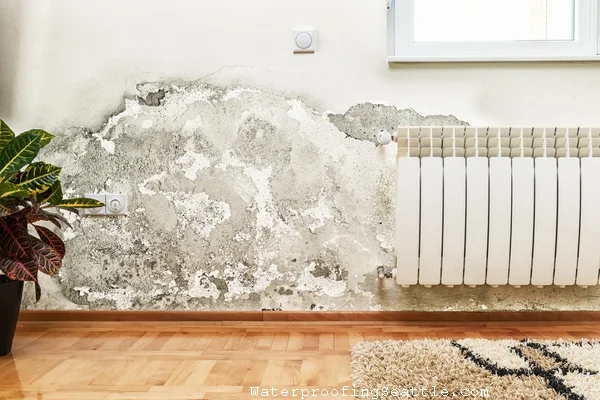
Are you concerned about the risk of water damage to your home in King County, Washington? Don’t wait until it’s too late to protect your investment. Take proactive steps now to strengthen your home’s foundation and safeguard against potential flood damage. With the right precautions in place, you can have peace of mind knowing that your home is fortified and prepared for any water-related challenges that may come its way.
1. Start by evaluating your current foundation. Check for any cracks or gaps that could potentially allow water to seep into your home. These vulnerabilities can quickly escalate during heavy rainfall or flooding, leading to costly repairs and irreversible damage. Don’t wait for the next storm to expose these weak points ” fix them now and prevent potential disaster.
2. Consider waterproofing solutions for your foundation. One effective method is installing a waterproof membrane or coating on the exterior walls of your home. This acts as a barrier, preventing water from infiltrating your foundation and seeping into your living spaces. It’s a small investment that yields significant long-term benefits, making it well worth considering.
3. Invest in a sump pump system. Floods can overwhelm even the most resilient foundations, which is why having a reliable sump pump system is essential. This device works by diverting water away from your foundation, protecting it from potential damage. Ensure your sump pump is properly maintained and regularly tested to guarantee optimal performance when you need it most.
4. Install proper drainage around your property. Improper grading and inadequate drainage can lead to excessive pooling of water near your home’s foundation, increasing the risk of flooding and water damage. Consult with a professional landscaper or contractor who can assess the current state of your property and propose effective drainage solutions to mitigate these risks.
5. Consider elevating vulnerable areas of your home. If your area is prone to flooding, it may be worth considering raising key elements of your property, such as HVAC systems, appliances, or even the entire first floor. Elevating these components can significantly reduce the risk of water damage during a flood and give you an additional layer of protection.
6. Don’t forget about your basement. Basements are often vulnerable to water infiltration due to their below-ground level positioning. Take proactive measures, such as sealing any cracks in the walls or floors, installing proper ventilation systems, and considering a basement waterproofing solution, such as a French drain or interior/exterior sealant. These steps can help transform your basement from a potential disaster zone into a safe and usable space.
7. Stay updated with local flood warnings and regulations. Being aware of potential hazards and local regulations can help you stay one step ahead when it comes to protecting your home against water damage. Have an emergency plan in place and be ready to take action if the need arises.
The Importance of Regular Maintenance
Are you actively maintaining your home’s foundation? The reality is that many homeowners neglect regular maintenance until it’s too late. By conducting routine inspections and addressing minor issues promptly, you can prevent significant structural damage and potential flooding.
Regular maintenance tasks could include cleaning gutters, ensuring downspouts are directing water away from the foundation, inspecting and repairing any cracks in the foundation walls or floors, and checking for signs of moisture or mold growth in basements or crawl spaces.
Don’t underestimate the power of prevention ” schedule regular maintenance checks to keep your foundation strong and protect your home against water damage.
Preparing for Extreme Weather Events
In King County, Washington, extreme weather events such as heavy rainfall, storms, and even occasional floods are a reality homeowners must prepare for. By taking proactive steps to fortify your foundation, you can minimize potential damage and ensure your home is better equipped to withstand these events.
Consider installing flood vents or window well covers to protect vulnerable areas of your home from excessive water pressure. These simple additions can make a significant difference in safeguarding your property from flood-related issues.
Additionally, stay informed about local emergency procedures and evacuation routes in case of a severe flooding event. Preparation is key ” don’t wait until disaster strikes to start thinking about protecting your home and loved ones.
Mitigating Risks with Insurance
While taking proactive measures to flood-proof your foundation is essential, it’s equally important to ensure you have adequate insurance coverage to protect your investment in case the worst happens.
Contact your insurance provider and understand the details of your policy. Are you covered for flood damage? If not, consider adding flood insurance to your policy to mitigate potential financial burdens caused by extensive repairs or rebuilding costs.
Remember, prevention is always better than cure, but having comprehensive insurance coverage as a safety net can provide additional peace of mind.
Flood-proofing your foundation in King County, Washington is a proactive step that every homeowner should take. Don’t leave the protection of your investment up to chance ” evaluate your foundation, invest in preventive measures like waterproofing and proper drainage, and stay updated with local regulations and emergency procedures.
Maintain your foundation through regular inspections and maintenance tasks, so minor issues don’t escalate into significant structural problems. Prepare for extreme weather events and consider adding flood insurance to your policy. By implementing these steps, you can proactively protect your home against water damage, giving you peace of mind and confidence in the face of potential flooding challenges.
